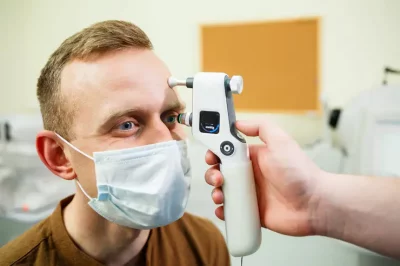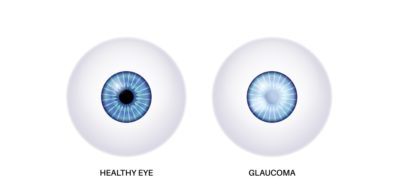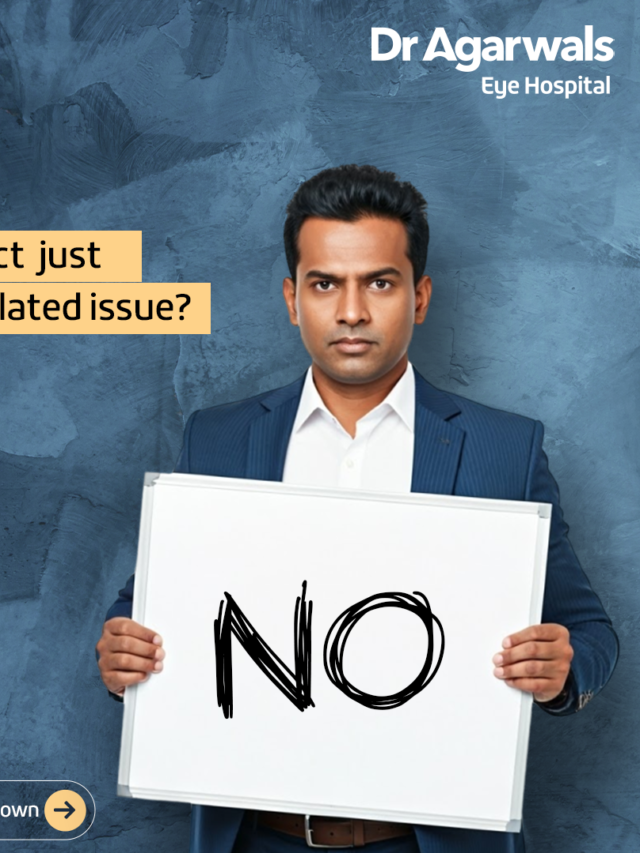Glaucoma occurs when the optic nerve in the eye gets damaged. Narrow-angle glaucoma is a type of glaucoma that occurs when the structure inside the eye, which allows fluid to drain normally from the eye, becomes restricted.
Narrow-angle glaucoma can be acute or chronic. Acute narrow-angle glaucoma requires immediate medical intervention. However, for both types, early diagnosis and treatment can help prevent vision loss.
In this blog, we will explore the meaning of narrow-angle glaucoma, its symptoms, causes, and answer the most frequently asked question: Is narrow-angle glaucoma hereditary?
What Is Narrow-Angle Glaucoma?
Narrow-angle glaucoma is a condition that causes an increase in the pressure inside the eye, potentially damaging the optic nerve. Narrow-angle glaucoma can cause vision loss if left untreated and occurs due to changes in the iris, the coloured part of the eye, and the cornea.
Our eyes constantly produce fluid, which helps maintain the shape of the eyeballs. There are channels present around the iris that help drain the fluid. If the iris presses forward, the angle between the iris and cornea narrows.
Causes and Risk Factors of Narrow-Angle Glaucoma
Narrow-angle glaucoma causes blurry vision and, ultimately, blindness and can occur due to several factors, including:
- Family History: People inherit the features of their eyes from their parents and grandparents, which can raise the risk of narrow-angle glaucoma.
- Old Age: Narrow-angle glaucoma is typically not present in younger adults. However, as the lens in the eye continues to grow with age, it can cause the iris to move forward over time. This can narrow the angle between the iris and the cornea.
- Sex: Females develop narrow-angle glaucoma more often than males, with an incidence ratio of 4:1.
Signs and Symptoms of Narrow-Angle Glaucoma
Narrow-angle glaucoma occurs when the drainage angle in the eye becomes blocked or too narrow, resulting in a sudden or gradual increase in intraocular pressure. Narrow-angle glaucoma causes a weakening of vision and therefore requires immediate medical attention.
Early Warning Signs
Early signs of narrow-angle glaucoma may be subtle or completely absent, making regular eye exams essential. When symptoms do occur, they include:
- Mild eye discomfort, especially in dim lighting
- Blurred vision that comes and goes
- Halos around lights, particularly at night
Sudden Symptoms During Acute Angle Closure
Acute angle closure is an ophthalmic emergency. Symptoms may appear abruptly and escalate quickly. Immediate treatment is required to prevent permanent vision loss.
- Severe eye pain
- Sudden drop in vision
- Eye redness and watering
- Mid-dilated, unresponsive pupils
Vision Changes to Watch For
Patients may report:
- Blurred or foggy vision
- Halos or rainbow-like rings around lights
- Loss of peripheral vision in advanced stages
These symptoms result from elevated intraocular pressure damaging the optic nerve.
Eye Pain and Headache Symptoms
Eye pain is often felt around or behind the eye and may radiate to the forehead or temples. This can be accompanied by:
- A throbbing headache
- Eye tenderness on touch
- Pain when moving the eyes
Associated Nausea and Vomiting
During an acute attack, nausea and vomiting may occur due to a rapid rise in intraocular pressure. These systemic symptoms can be misleading and mistaken for gastrointestinal conditions.
How Is Narrow-Angle Glaucoma Diagnosed?
Diagnosing narrow-angle glaucoma involves a comprehensive eye examination, with special focus on the eye’s drainage system.
Gonioscopy Test to Check Angles
The gold standard for measuring the angle between the cornea and iris is through gonioscopy. The ophthalmologist can view the angle of drainage directly through the use of a special lens.
This enables the professional to determine whether it is open, narrow, or closed. The test is crucial in differentiating the various types of glaucoma and determining the appropriate treatment course.
Treatment Options for Narrow-Angle Glaucoma
Treatment aims to open the drainage angle and prevent optic nerve damage by lowering intraocular pressure. The approach depends on whether the condition is acute or chronic.
Laser Surgery for Narrow-Angle Glaucoma
Laser surgery for narrow-angle glaucoma is the most common initial treatment. A laser punctures a tiny hole in the outer iris, allowing fluid to flow more freely around the blocked angle. It is usually done on both eyes, even when only one of them is infected.
Possible Side Effects of Laser Surgery
While laser iridotomy is generally safe, some patients may experience:
- Temporary blurred vision
- Eye redness or discomfort
- Light sensitivity
- Mild inflammation
These symptoms usually resolve with short-term medication.
Other Surgical Treatments and Medications
If laser treatment is not sufficient, additional interventions may include:
- Medications: Eye drops to reduce intraocular pressure (IOP), such as beta-blockers, prostaglandin analogues, or carbonic anhydrase inhibitors.
- Lens extraction: In certain cases, removing the natural lens can help widen the angle and prevent further closure.
- Trabeculectomy or drainage implants: Performed if pressure remains uncontrolled.
Things to Avoid for Narrow-Angle Glaucoma
To reduce the risk of angle closure and pressure spikes:
- Avoid sudden exposure to darkness or dim environments.
- Do not take certain medications without medical advice, especially antihistamines, decongestants, or psychiatric medications that can dilate pupils.
- Avoid lying flat for extended periods during an acute episode.
- Reduce stress and eye strain, and stay well hydrated.
Always follow your ophthalmologist’s instructions closely to prevent complications.
Conclusion
Narrow-angle glaucoma is a serious but manageable condition when diagnosed early and treated appropriately. Since symptoms may be sudden or silent, regular eye examinations and awareness of warning signs are key to preserving vision.
Laser iridotomy, medications, or surgery can successfully control the disease. At eye care centres like Dr Agarwal’s Eye Hospital, advanced diagnostic tools and experienced glaucoma specialists ensure precise detection and timely treatment of angle closure glaucoma.
If you experience sudden eye pain, changes in your vision, or halos around lights, consult an eye specialist immediately. Early action can protect your vision for years to come.









